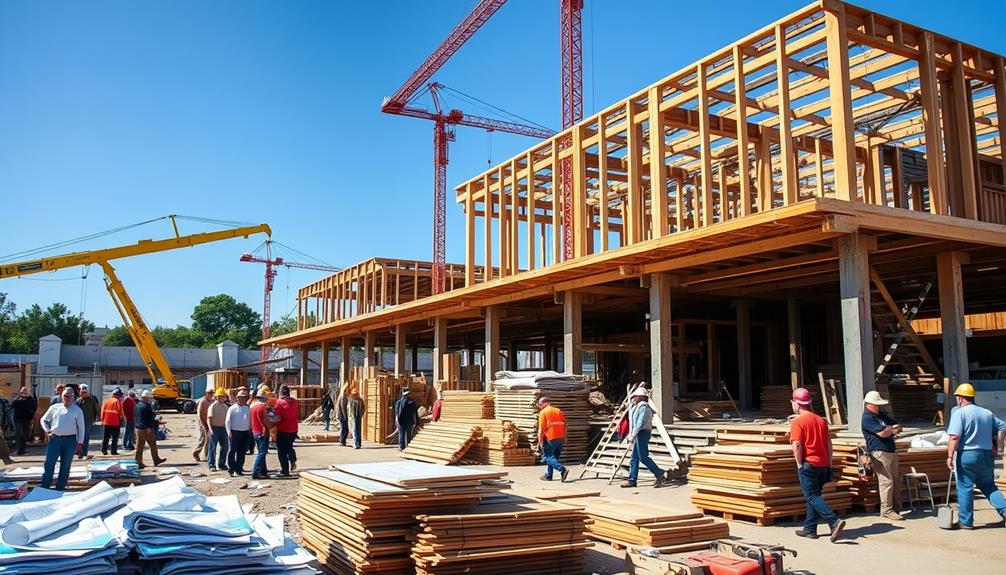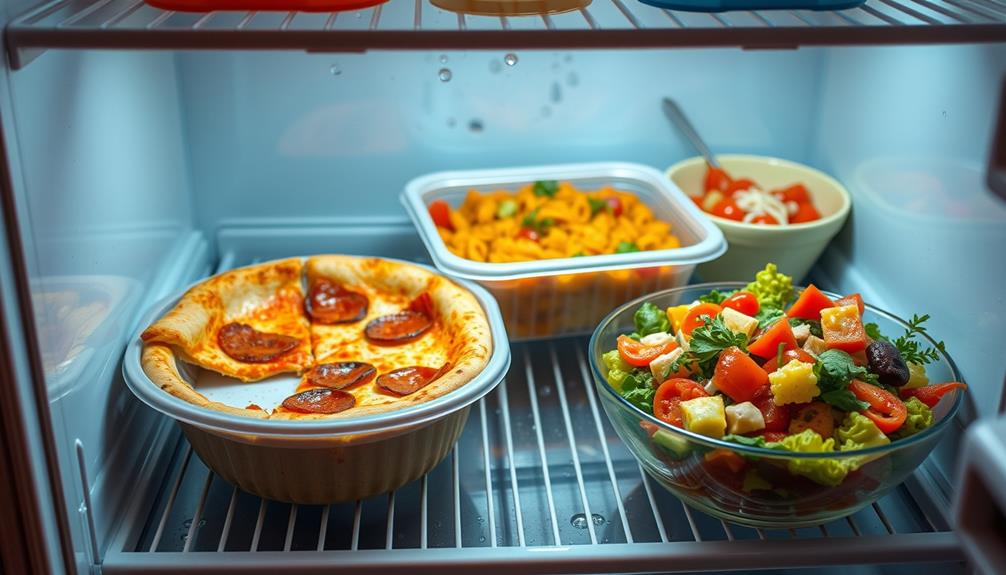Building a restaurant can set you back between $95,000 and over $2 million. It all hinges on factors like your location, size, and type of restaurant. You'll need to take into account construction costs, typically ranging from $150 to $750 per square foot, alongside startup expenses that might include about $10,000 to $50,000 for pre-opening. Don't forget permits, which can add another $1,000 to $12,000. Monthly rent ranges from $2,000 to $12,000, depending on your chosen spot. There's a lot more to explore about costs and planning, so keep going to uncover additional insights!
Key Takeaways
- Initial investment for building a restaurant ranges from $95,000 to over $2 million, depending on type, location, and size.
- Construction costs average between $150 and $750 per square foot, with $450 being the typical rate.
- Startup costs include pre-opening expenses, equipment costs, and licenses, averaging between $10,000 and $50,000.
- Monthly rent typically ranges from $2,000 to $12,000, significantly impacting overall operating costs.
- Labor costs generally account for 25% to 30% of total operating expenses, with additional employee benefits adding to this figure.
Overview of Restaurant Costs
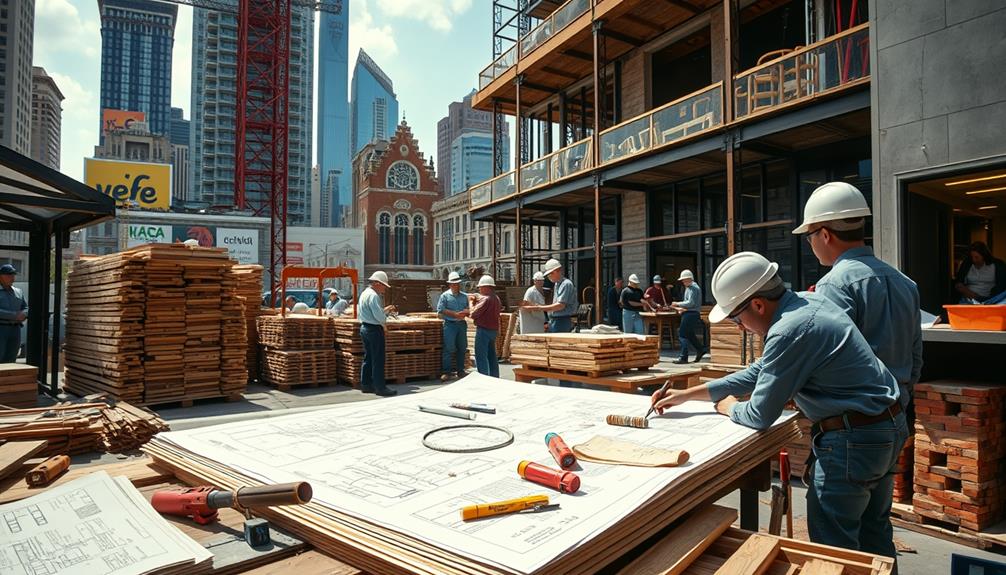
When considering the costs to build a restaurant, what factors should you keep in mind? First, you need to think about startup costs, which can range from $95,000 to over $2 million. These costs depend heavily on your restaurant type, location, and size. Additionally, it's crucial to have a solid budget in place to manage these expenses effectively. If you’re opening a small restaurant, you’ll need to consider the costs of permits, licenses, and any necessary renovations to the space. Equipment, furniture, and initial inventory will also be major expenses to factor in. Ultimately, having a clear understanding of the costs of opening a small restaurant will help you make informed decisions and set realistic financial goals.
Next, construction costs usually fall between $150 and $750 per square foot, with the average cost around $450.
You also can't overlook essential expenses like licenses and permits, which can set you back anywhere from $1,000 to $12,000. Rental costs play a significant role too; monthly rent might range from $2,000 to $12,000, comprising about 5% to 10% of your operating expenses.
Lastly, don't forget utilities, especially for larger restaurants, averaging $1,000 to $1,200 monthly. This accounts for approximately 3% to 5% of your total operating costs.
All these factors combine to create a thorough picture of the financial landscape you'll navigate as you begin your restaurant journey. Understanding these costs upfront will help you plan effectively and avoid unexpected financial hurdles later on.
Breakdown of Space Expenses
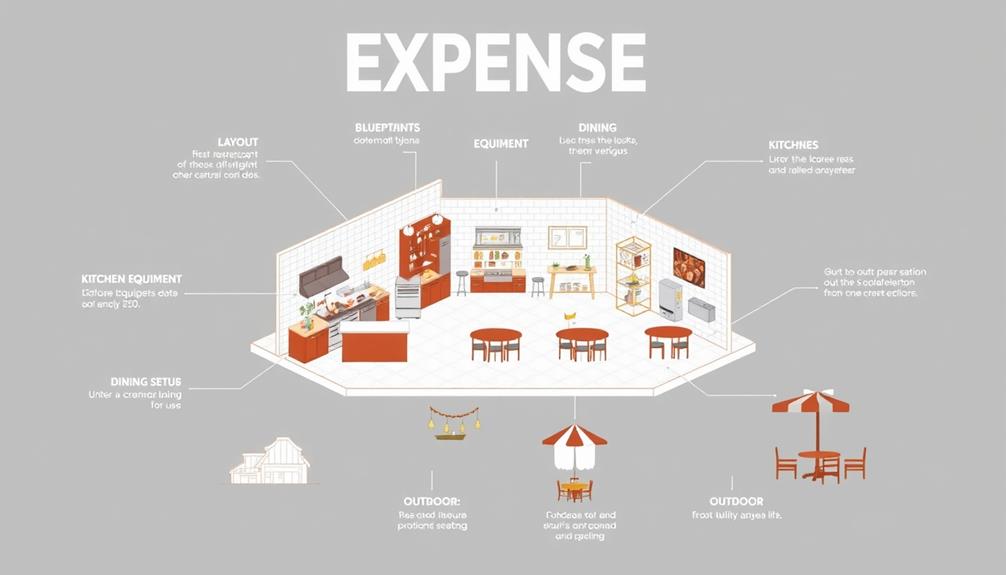
When it comes to space expenses, understanding average rental costs and whether to purchase or lease is essential for your budget.
The importance of securing a safe environment for your restaurant can also influence your decision, as value of home security systems plays a role in attracting customers and ensuring safety.
You'll also need to factor in utility expenses, which can add up quickly.
Average Rental Costs
As you consider the costs of building a restaurant, understanding average rental expenses is vital, since they can greatly affect your overall budget. The average rental cost for restaurant space is around $159 per square foot, but this can vary considerably based on location and demand. Your monthly rent could range from $2,000 to $12,000, with a median rent typically landing around $5,000.
Choosing the right space is essential, as certain options, like best vacuums for dust removal in 2024, can considerably impact operational efficiency and cleanliness.
Rent expenses often constitute 5% to 10% of your restaurant's monthly operating costs, making it a key factor in your financial planning. If you're eyeing larger restaurants, be prepared for higher rental costs due to increased space requirements. Alternatively, considering ghost kitchens can help reduce your space needs and lower rent expenses.
Strategic location choices will also impact your rent affordability. Areas with better foot traffic typically command higher rental rates, so it's wise to balance location desirability with your budget.
Purchase vs. Lease
Deciding whether to purchase or lease restaurant space can greatly impact your finances. When you purchase, expect costs around $178 per square foot, while leasing averages about $159 per square foot. Leasing often proves to be a more budget-friendly option, especially for new restaurateurs.
Additionally, investing strategically in assets such as Gold IRAs can offer long-term financial resilience, which may help balance your overall budget. Monthly rent typically falls between $2,000 and $12,000, consuming about 5% to 10% of your monthly operating costs.
If you choose to build from scratch, be prepared for significant construction costs that can exceed $1 million, especially for larger commercial spaces. Alternatively, purchasing an existing property might involve lower upfront costs, depending on its condition.
The average opening cost per square foot for a restaurant hovers between $100 and $800, with a median of roughly $450. If you're considering a ghost kitchen, which requires only 200-300 square feet, you'll find that this drastically reduces both your required space and rental expenses compared to traditional restaurants with larger dining areas.
Weighing the pros and cons of purchasing versus leasing is vital in determining your restaurant's financial trajectory.
Utility Expenses Overview
Utility expenses are a essential component of your restaurant's operating budget, often accounting for 3% to 5% of total costs.
For a restaurant sized between 4,000 and 4,500 square feet, you can expect average monthly utility bills ranging from $1,000 to $1,200. These bills cover essential services like electricity, water, and natural gas, which are critical for maintaining operations.
Implementing energy-efficient practices can help reduce these costs and align with trends in energy efficiency in tiny homes. The average annual electricity cost is about $2.90 per square foot, while natural gas expenses typically average around $0.85 per square foot.
During the construction phase, you'll need to maintain continuous utility operation, which means these costs can start accruing before you even open your doors.
That's why effective management of utility usage is essential. If you don't keep a close eye on these expenses, they can escalate quickly and greatly impact your long-term financial planning.
Utility Expenses Explained

Managing utility expenses is a significant aspect of running a successful restaurant. As you navigate the financial landscape, it's important to understand that these expenses can greatly impact your overall operating costs. For restaurants measuring between 4,000 to 4,500 square feet, the average utility bills range from $1,000 to $1,200 monthly. This accounts for about 3% to 5% of your total operating costs, making accurate restaurant budgeting imperative.
Additionally, considering the unique ambiance created by different brewing methods can help enhance the dining experience, which may indirectly contribute to better utility management through optimized energy use.
During the construction phase, you'll start incurring utility costs even before opening your doors. The average annual electricity cost is estimated at $2.90 per square foot, while natural gas runs about $0.85 per square foot. Keeping a close eye on these figures is crucial for effective management.
Incorporating utility expenses into your financial planning can enhance your profitability in the long run. By actively monitoring and managing these costs, you can make informed decisions that contribute to your restaurant's success.
Labor and Employee Costs
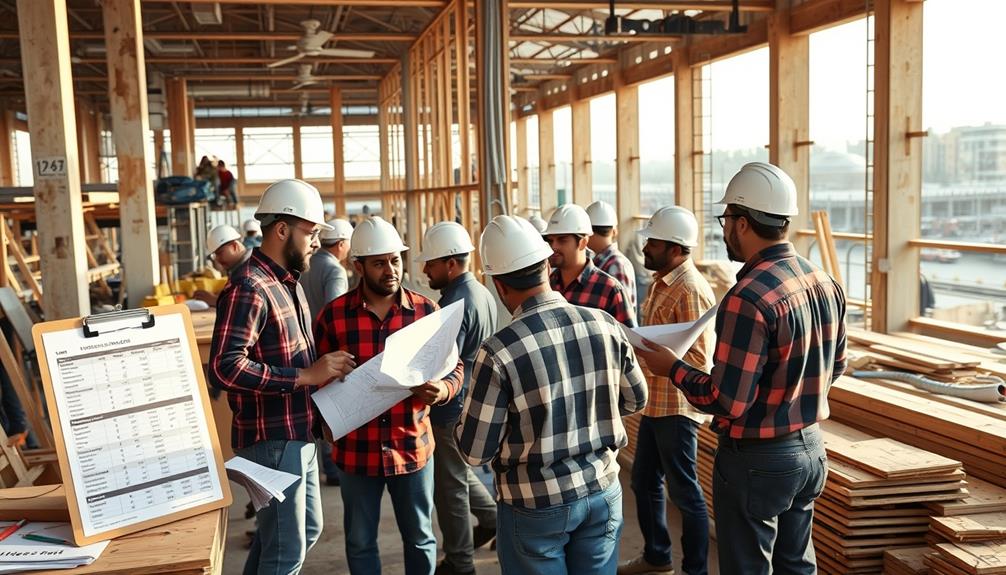
Labor and employee costs represent a significant portion of your restaurant's operating expenses, typically ranging from 25% to 30%. Understanding these costs is vital for maintaining profitability. Quick-service restaurants often see lower labor costs compared to full-service establishments, but all restaurants face challenges in this area.
Here's a quick overview of labor costs and their components:
| Cost Component | Percentage of Total | Notes |
|---|---|---|
| Base Labor Costs | 25% – 30% | Core salaries and wages |
| Employee Benefits | 20% – 30% of labor | Health insurance, retirement |
| Payroll Taxes | Varies | Taxes on employee wages |
The calculation for labor cost percentage is important: divide total labor costs by total sales and multiply by 100. With 70% of restaurants reporting hiring staff difficulties, labor shortages can lead to increased costs. By managing these factors, you can better control total operating expenses and enhance your restaurant's profitability. Keep an eye on these elements to guarantee your business thrives in the competitive restaurant industry.
Food Cost Management
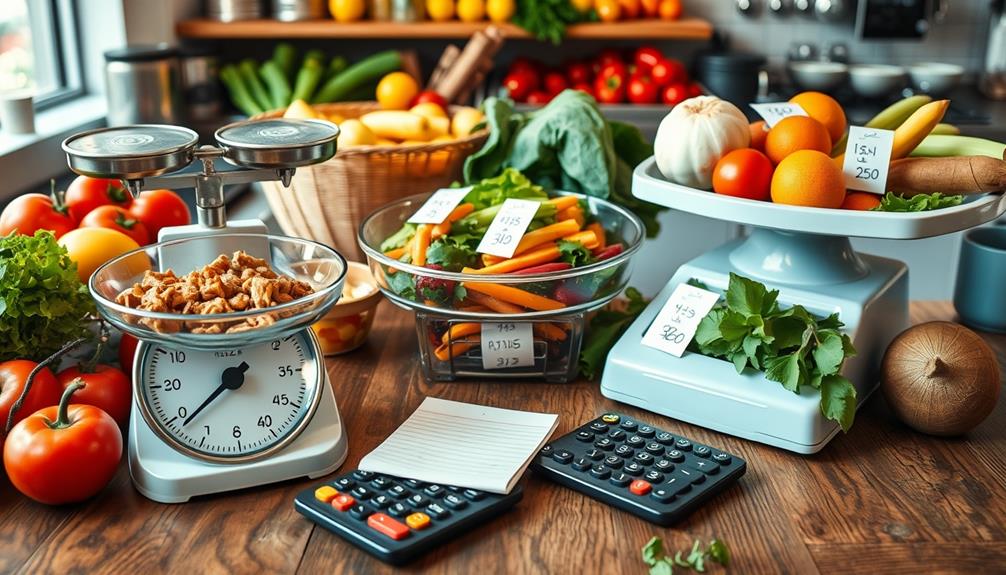
Managing food inventory effectively is key to keeping your expenses in check, especially since food costs can take up a significant portion of your budget.
Utilizing tools for food cost management can streamline inventory tracking and reduce waste.
Building strong vendor relationships can help you negotiate better prices and reduce overall costs.
Plus, optimizing your menu can lead to better profitability while minimizing waste and maximizing value.
Managing Food Inventory
Effective food inventory management is essential for a restaurant's success, as food costs can represent a significant portion of ongoing expenses. By mastering this aspect, you can directly impact your restaurant's financial health.
Additionally, implementing creative techniques to stimulate imagination can help in devising innovative ways to manage inventory and reduce costs. Here are four key strategies to evaluate:
- Implement structured inventory tracking: Use a system that allows you to monitor stock levels accurately, minimizing discrepancies and preventing over-ordering.
- Regularly review menu pricing: Adjust portion sizes and prices to align food costs with sales, ensuring you maintain healthy profit margins.
- Reduce food waste: Analyze your inventory regularly to identify items that aren't selling, adjusting orders accordingly to cut down on waste and save on costs.
- Track vendor relationships: Don't underestimate how negotiating with suppliers can lower your food costs, as 40% of restaurant owners find success in keeping their expenses in check this way.
Vendor Relationship Importance
Strong vendor relationships are vital for any restaurant looking to optimize food cost management. When you cultivate these connections, you can negotiate better pricing and terms—about 40% of restaurant owners utilize this strategy to keep food costs low.
Sustainable weight loss is essential for overall health and can be mirrored in the way restaurants approach their food sourcing. Good communication with suppliers also plays an important role; nearly 58% of restaurants face inventory management challenges that can lead to food waste.
By developing long-term partnerships with reputable vendors, you enhance reliability in your supply chain logistics, ensuring consistent menu offerings.
Regularly reviewing vendor agreements allows you to adapt quickly to market fluctuations, helping you maintain competitive pricing and reduce overall food costs.
Additionally, building rapport with local suppliers can lead to higher-quality ingredients, which positively impacts customer satisfaction and encourages repeat business.
When customers enjoy their experience, they're more likely to return, thereby boosting your bottom line.
In today's competitive landscape, it's not just about the food you serve but how effectively you manage the relationships that bring those ingredients to your kitchen.
Prioritize these vendor relationships, and you'll see a noticeable impact on your restaurant's success.
Menu Cost Optimization
Building on the importance of vendor relationships, optimizing menu costs is a key strategy for maximizing your restaurant's profitability. Food costs can represent 28% to 35% of your ongoing expenses, and managing them effectively is vital.
For instance, you might take into account sourcing ingredients from local farms to enhance the freshness of your dishes, similar to the vibrant food scene in Best Breakfast Spots in Portland, Maine.
Here are four strategies to keep in mind:
- Leverage Vendor Relationships: Negotiate with suppliers to secure better pricing and quality ingredients, potentially reducing your food cost percentage.
- Implement Effective Inventory Management: Tackle the 58% of restaurants struggling with food waste by tracking inventory meticulously, which can save you money and improve profitability.
- Adopt Smart Menu Pricing Strategies: Guarantee your menu prices reflect food cost percentages while factoring in other operating expenses, keeping you competitive in the market.
- Invest in Marketing: Allocate 3% to 6% of your projected revenue to marketing. This helps optimize your menu offerings based on customer preferences and trends, enhancing your overall appeal.
Technology Investment
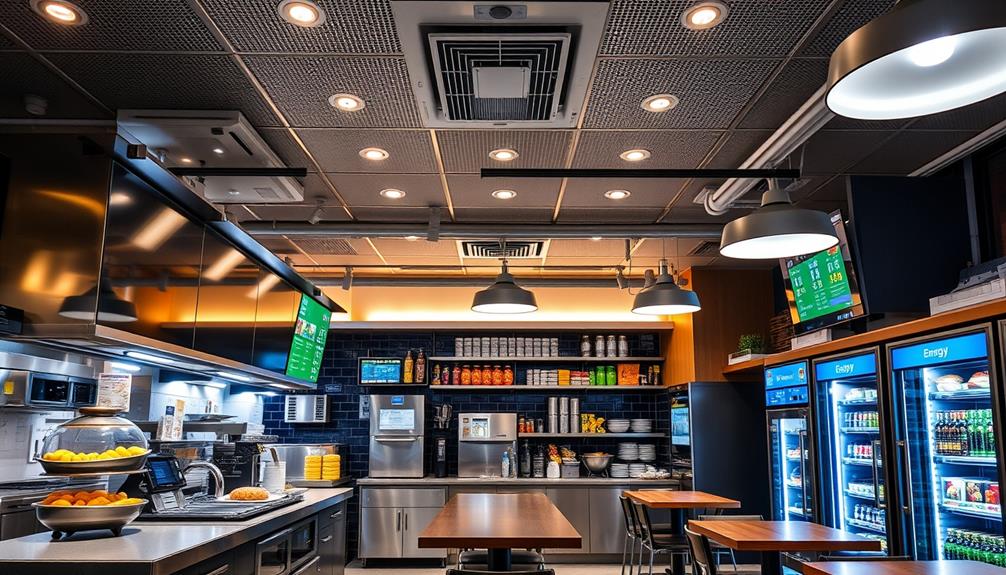
Investing in technology is essential for modern restaurant operations, as it can greatly enhance efficiency and customer satisfaction. A well-implemented POS system can cost between $99 per month to over $60,000, depending on the features you need. This initial technology investment is critical, especially in a competitive market.
Furthermore, consider integrating contactless payment options, as 34% of customers now prioritize this feature when dining out.
Website development is another area where costs can vary widely—from free DIY solutions to more than $350,000 for customized systems. Your online presence is fundamental for attracting customers, so don't overlook this aspect.
In addition, additional restaurant technology like employee scheduling systems can save you time, given that 25% of establishments spend over three hours weekly on scheduling tasks.
Licensing and Permits
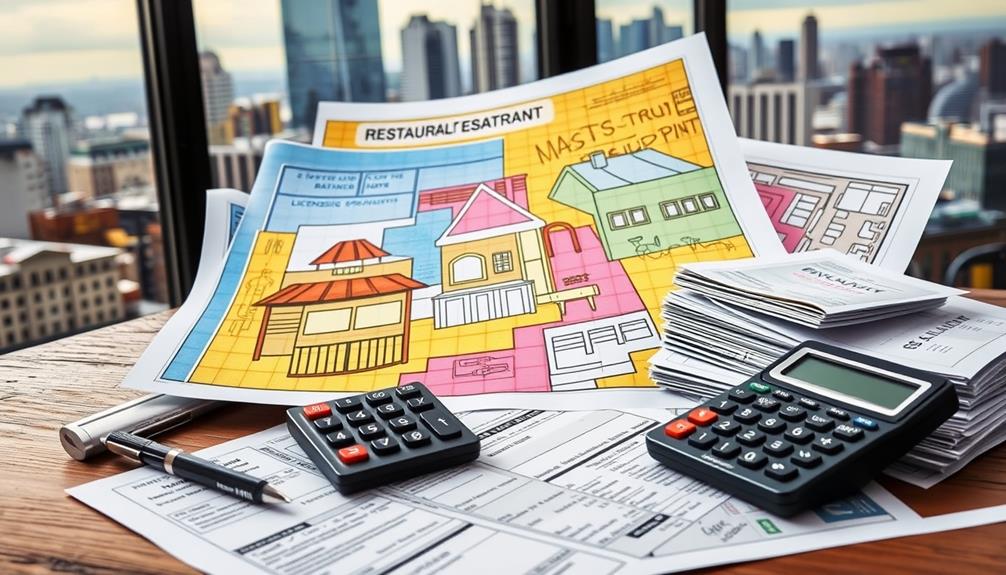
Steering through the landscape of licensing and permits is essential for opening a restaurant, as it can greatly affect your startup costs and timeline.
As a restaurant owner, you'll need to navigate various requirements, which can range from $1,000 to $12,000 depending on your location and restaurant type.
Here's a quick list of key licenses and permits you'll likely need:
- Business License: $75 to $7,000+
- Food Handling Service License: $100 to $1,000
- Liquor Licenses: $300 to $14,000, if serving alcohol
- Certificate of Occupancy: Required for occupancy
Additionally, you'll need a Food Service License and an Employer Identification Number (EIN).
On average, securing six licenses and permits is necessary for legal operation.
Ensuring you meet all regulatory compliance requirements during the planning phase will help streamline your restaurant's launch and avoid costly delays.
Don't underestimate the importance of these licenses and permits; they're vital for a smooth start to your culinary venture!
Startup and Pre-Opening Costs
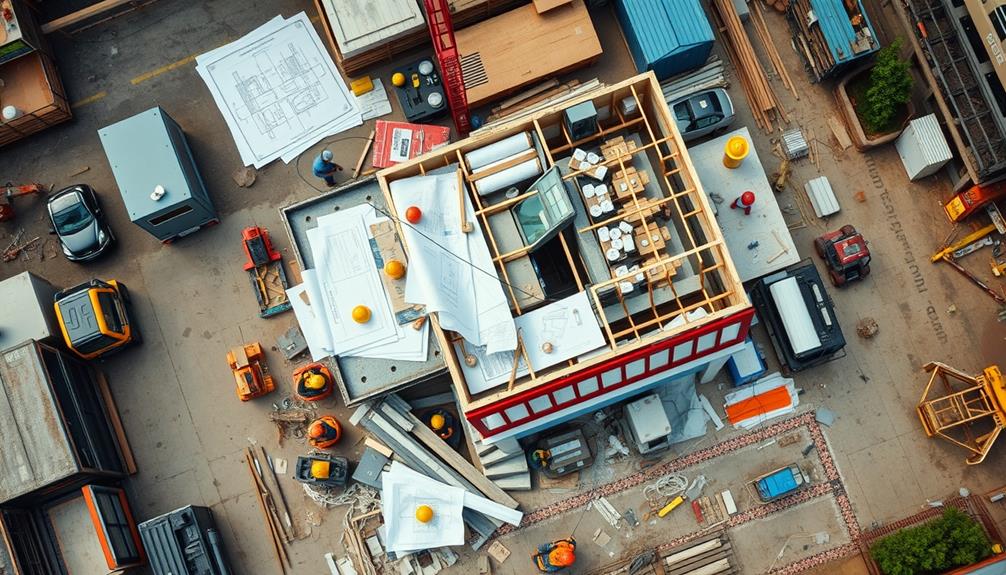
After maneuvering through the maze of licensing and permits, it's time to focus on the financial aspects of launching your restaurant. Your startup costs can range from $95,000 to over $2 million, influenced by your restaurant concept and location. It's important to have a clear vision, as this will guide your budget.
Pre-opening expenses usually vary between $10,000 and $50,000. These costs can include recipe development and inventory for testing, which are critical for your menu's success.
Don't forget about equipment costs; they typically range from $20,000 to $150,000 depending on the kitchen size and specific appliances needed.
You'll also need to account for licenses and permits, which can set you back between $1,000 and $12,000 depending on local regulations.
Working capital is another significant aspect, ideally covering 3 to 6 months of operating expenses. This buffer guarantees smoother operations before you start generating revenue.
Choosing the Right Location

Choosing the right location for your restaurant is essential for its success and can make or break your business. A strategic choice can enhance visibility, foot traffic, and ultimately, profitability.
Here are four key factors to evaluate when selecting your restaurant's location:
- Foot Traffic: High-traffic areas can attract more customers, increasing your chances of success.
- Cost: Monthly rent can range from $2,000 to $12,000, greatly impacting your budget.
- Square Footage: Prime locations may cost over $178 per square foot to purchase and around $159 for leasing. Evaluate your space needs versus budget.
- Ghost Kitchens: If you opt for a ghost kitchen, you'll need less space (200-300 square feet), which can lower your rent expenses.
Frequently Asked Questions
How Profitable Is Owning a Restaurant?
Owning a restaurant can be profitable, but it varies widely. You might see margins from 3% to 15%, with successful spots hitting higher. Focus on managing costs and achieving daily sales targets to boost profitability.
Is 50K Enough to Start a Restaurant?
No, $50,000 isn't enough to start a restaurant. You'll face many startup costs, like equipment and licenses, which usually exceed that amount. It's better to budget more to guarantee sustainability and success.
What Is the Startup Cost for a Small Restaurant?
Starting a small restaurant is like planting a seed; you'll need around $200,000 to $600,000 for initial expenses. Factor in equipment, permits, and working capital to nurture your dream into a thriving reality.
How Many Seats Are in a 1000 Sq Ft Restaurant?
In a 1,000 sq ft restaurant, you can fit between 40 to 100 seats. It depends on your layout and design choices, balancing space for dining, kitchen, and restrooms for ideal seating capacity.
Conclusion
As you stand in your future restaurant's empty space, the thrill of possibility fills the air. You've navigated costs, from utilities to labor, and weighed every decision carefully. But what if you could transform this blank canvas into a bustling eatery that captures hearts and appetites? With the right location and a sprinkle of passion, the dream is just within reach. The countdown begins—are you ready to turn your vision into a vibrant reality?
